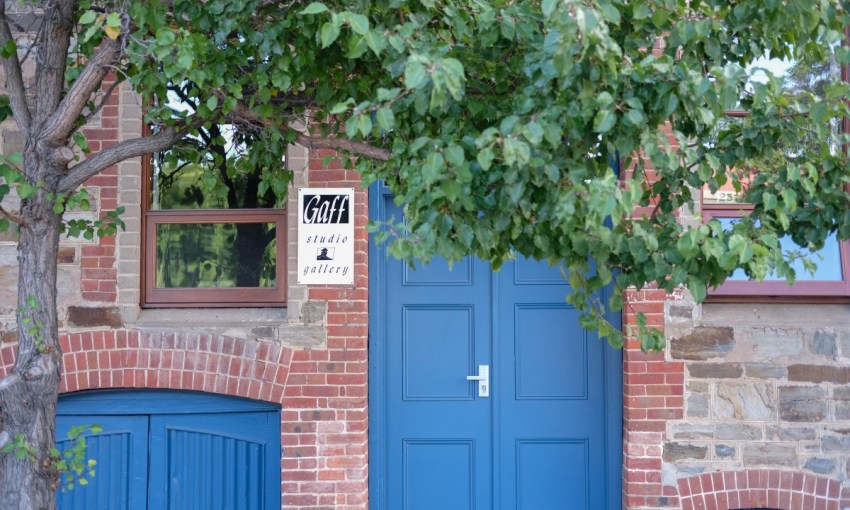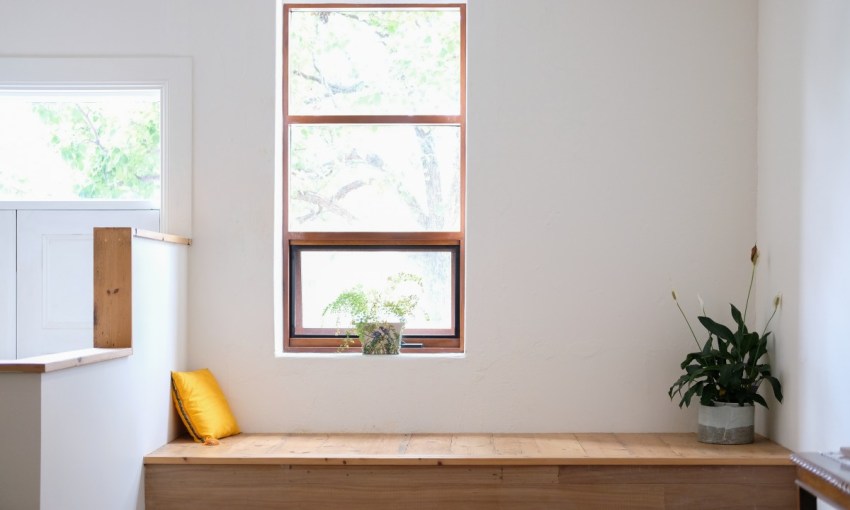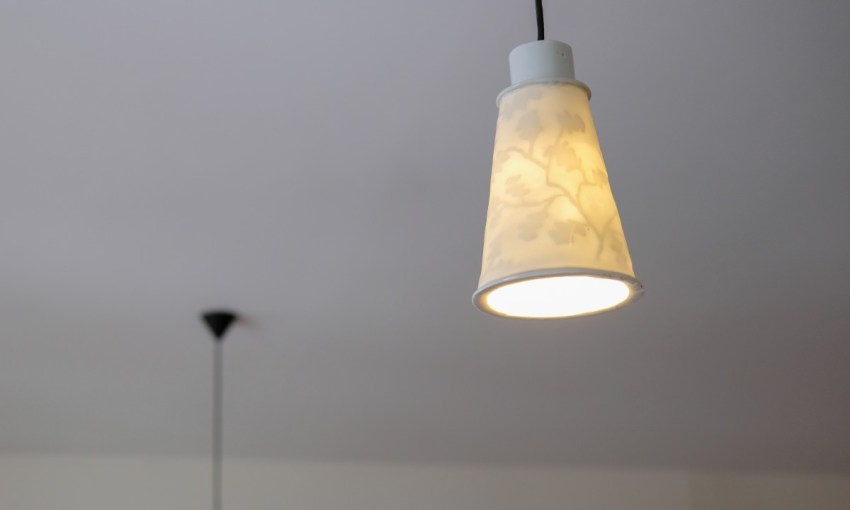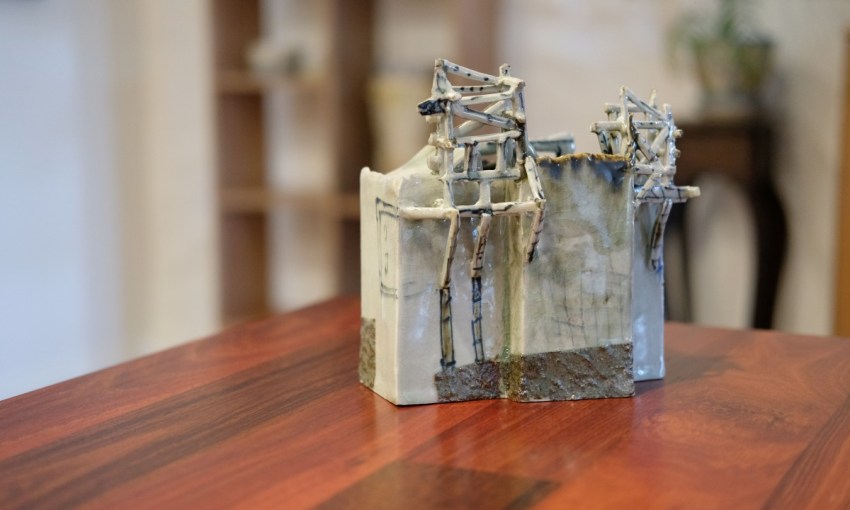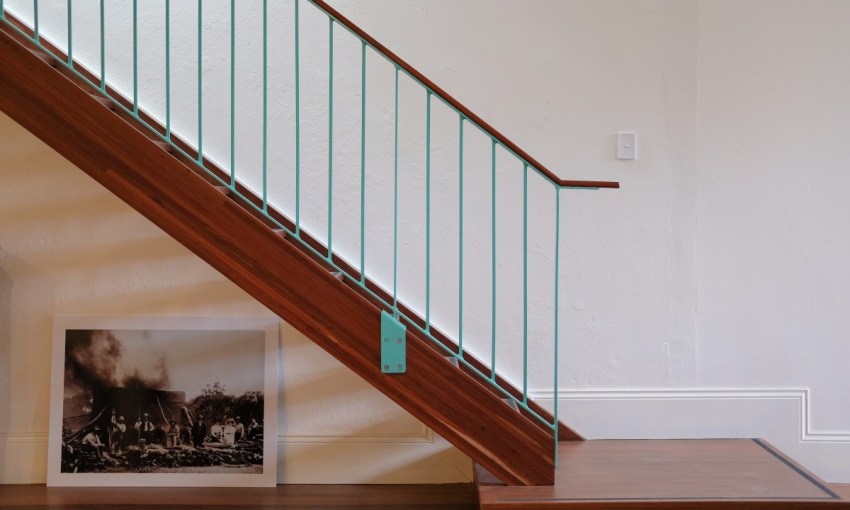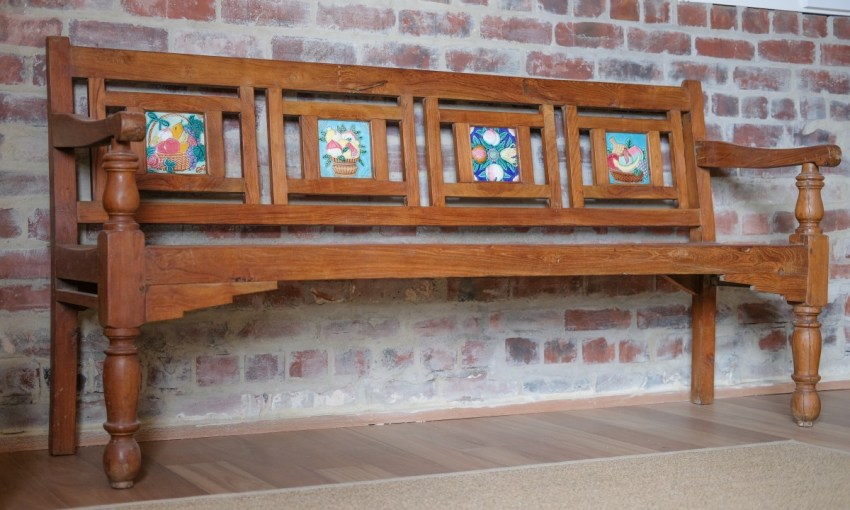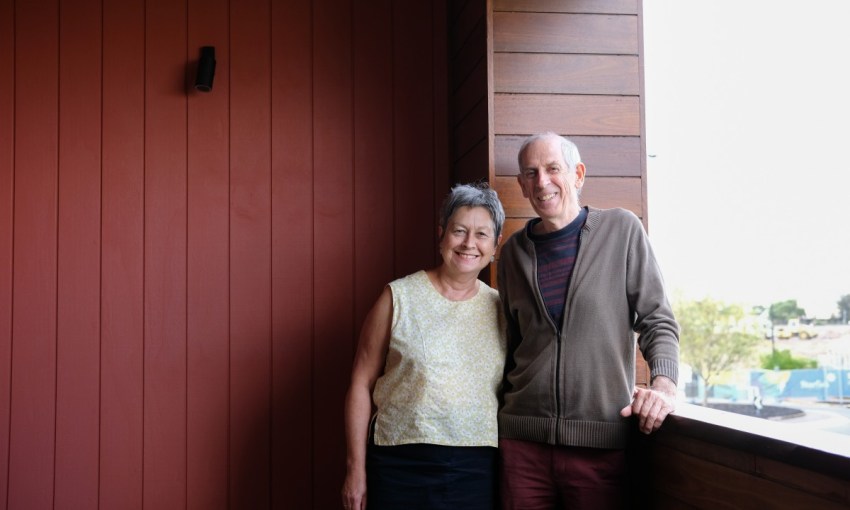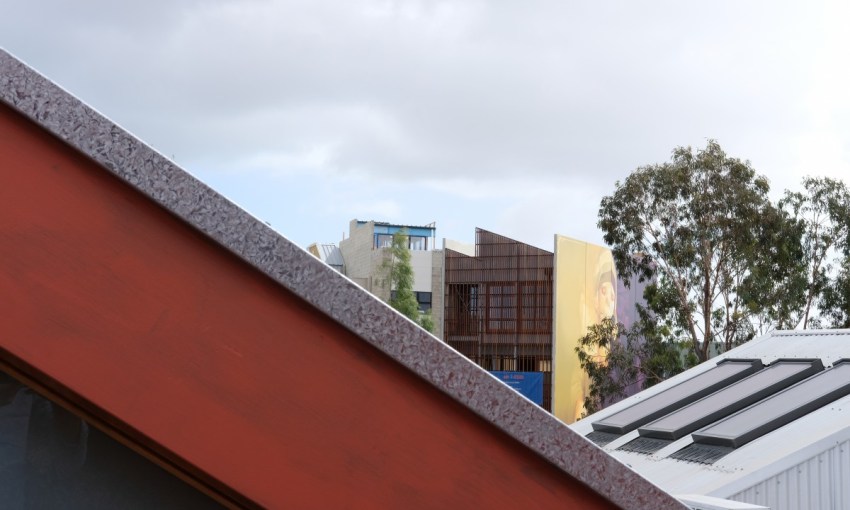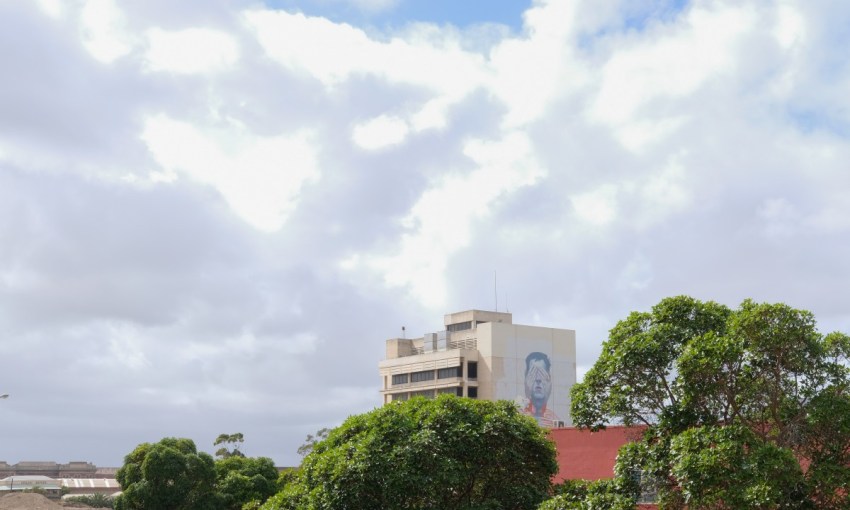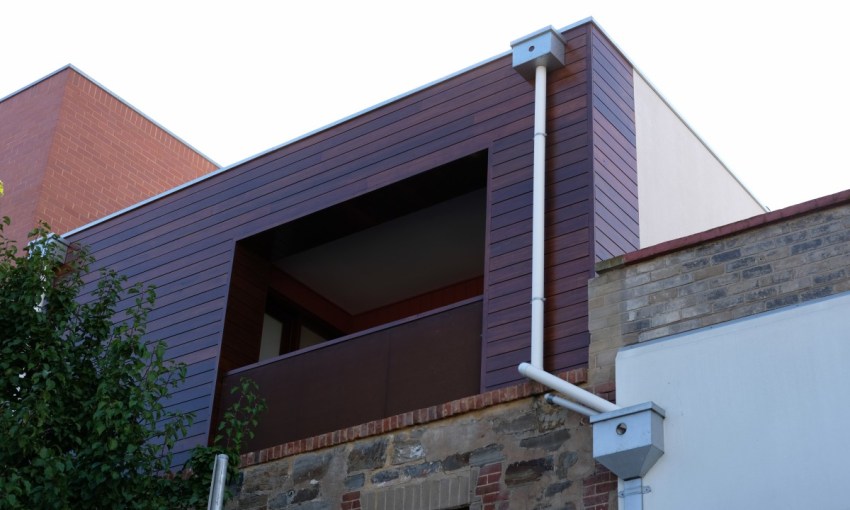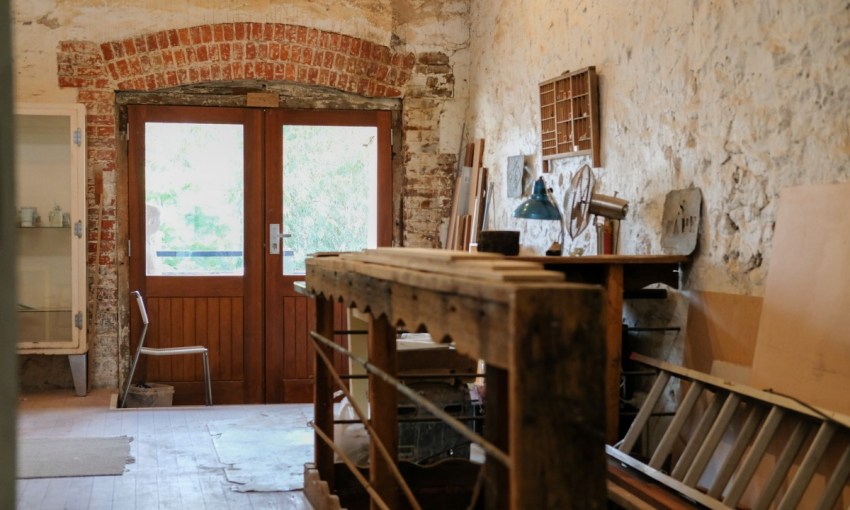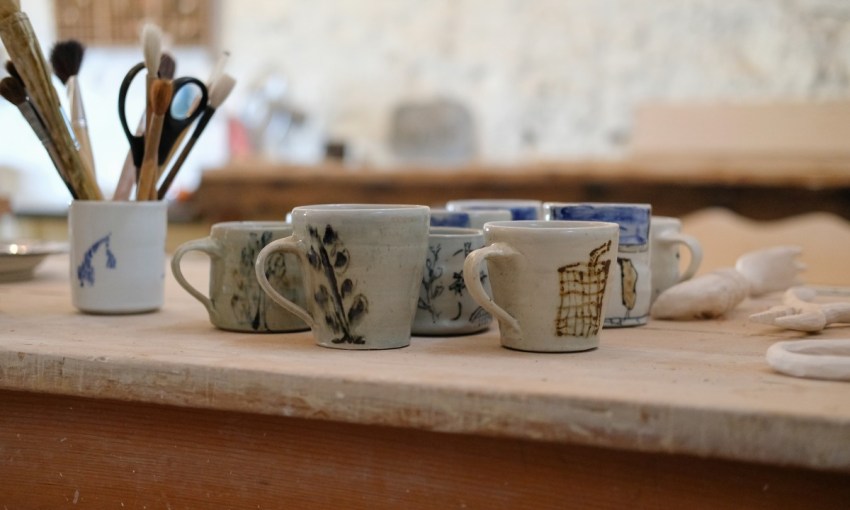Following the lead of their Port Adelaide locale, Peter Johnson and Karen James are doing urban renewal on a smaller scale, converting their former gallery and artist studio into short term accommodation.
Gaff Studio Apartment: Small scale urban renewal
For the past 22 years, Gaff Studio in Port Adelaide has existed as a community-focussed artist studio and exhibition space, run by Peter Johnson, a ceramic artist, and his partner, Karen James.
The couple bought and renovated the space in 1996 after Peter left Jamboree Workshop, a ceramic collective he founded with Jo Crawford, Philip Hart and Gerry Wedd, and in moving to this new location, it was their aim to bring a heritage building that had been relegated to private warehousing back into the public realm.
Gaff Studio Apartment is available for bookings now. See their website for more details.
“It was actually quite derelict when we bought it,” Karen says, leafing through a photo album of the build period.
“[Pete] wanted a small-ish warehouse to use as a gallery and as a workshop, and… what we wanted to do was focus on the original structure of the building, bring that to life and show that.”
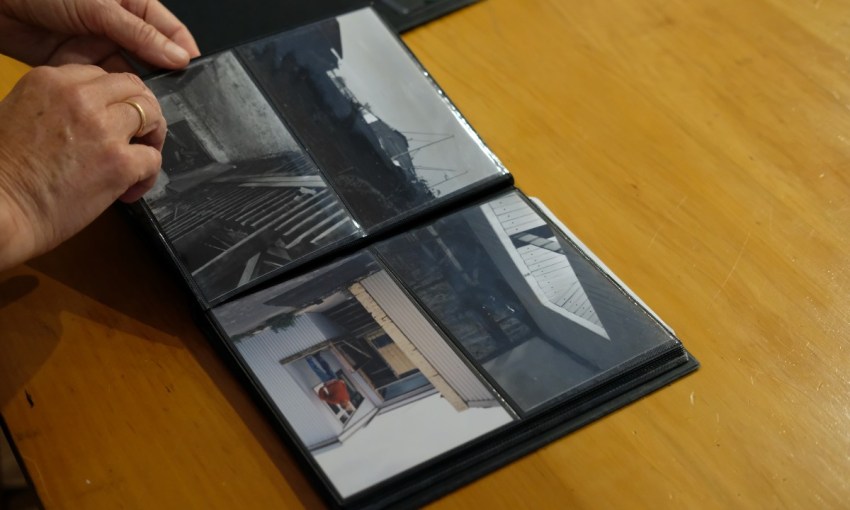
For more than two decades, the studio successfully acted as an intermediary between the public and a small part of the Port’s history, but as the recent urban renewal of the locale progressed, Peter and Karen found the relevancy of a small exhibition space was beginning to wane.
“There’s a few other community galleries popping up – Gallery Yampu, Harts Mill, there’s a few other spaces that are a bit more flexible, Cats in the Loft, so that gave us an opportunity to rethink, and we always talked about the next phase of this building, giving it a more substantial life,” Pete says.
The next phase, they decided, would be an adaptive reuse of the building, following the lead of projects happening around them, and after 18 months of renovations and lengthy negotiations with state and local heritage, they converted the space into short-term accommodation, refitting the front section of the building and adding a first floor.
At the ground level, the front space is expansive and relatively unadorned, the focus still being to draw attention to the building’s – and the Port’s – own history. The space is furnished with some artwork, including Pete’s own ceramics, located in shelving and on light fittings. At the back, a small studio space is concealed for artists who might want to use their stay as a productive getaway.
Upstairs, the newly built addition feels like a natural extension of the ground floor, with a few noticeably modern textures, and a balcony that gives view to Port Adelaide’s recent artistic flourishes.
“There’s been lots of community forums focussing on adaptive reuse, because there’s so many empty buildings here, we actually have to find some other functions for them,” Karen says.
“We’re not big scale developers, but this is something that we could do and showcase: you can actually change a building, make it beautiful, and there’s an economic benefit to it.
“What we’re learning is that heritage and economic development, that’s what people travel for, they come for an authentic experience. This was our way, in some ways, of contributing to it.”
As the Port teeters ever closer to becoming a renewed destination in the minds of international, interstate, and intrastate travellers alike, Peter and Karen hope that they will stand out as a comfortable and engaging way to experience Port Adelaide’s evolving culture.
“If you’ve got a sense of adventure, it’s a great place to be. Just walking around, the history, and the river, and the dolphins, and Hart’s Mill. It’s great,” Karen says.
“The other thing that I’m really excited about is that young people are coming. We were fairly young when we went to Semaphore, we were about 30 … We just loved coming and being in a historic area and being a part of the buildings, the environment, and it’s just really lovely to see young people coming and discovering that, because this is actually South Australia’s past.”



